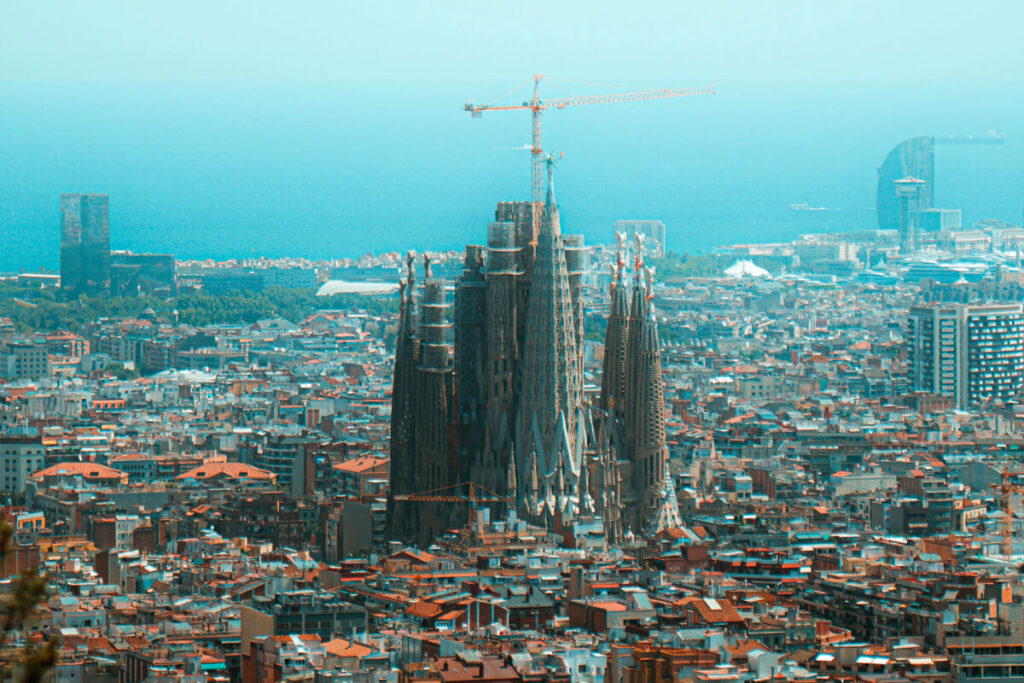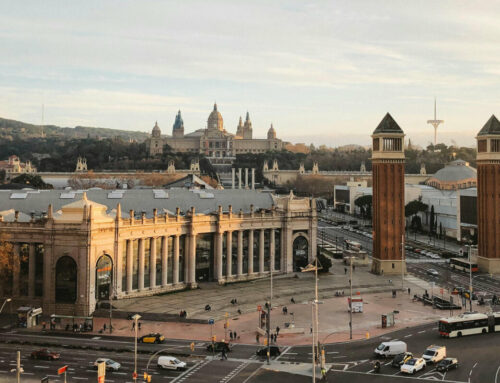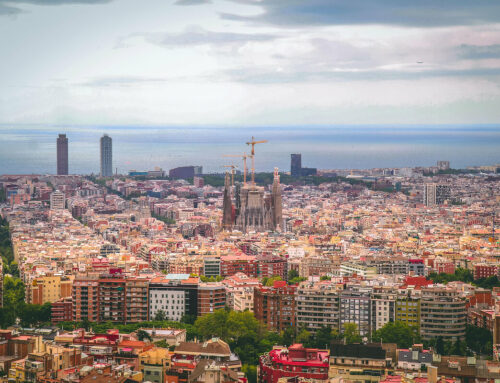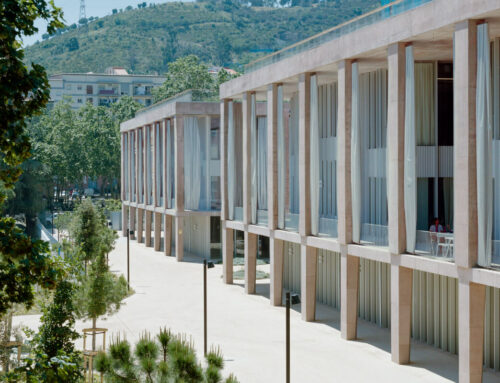America’s Cup 2024: Barcelona’s Ageing Waterfront Gets a Facelift
Barcelona Gets Ready to Host the Most Important Sailing Regatta in the World and Is Speeding up the Upgrading of Its Shoreline
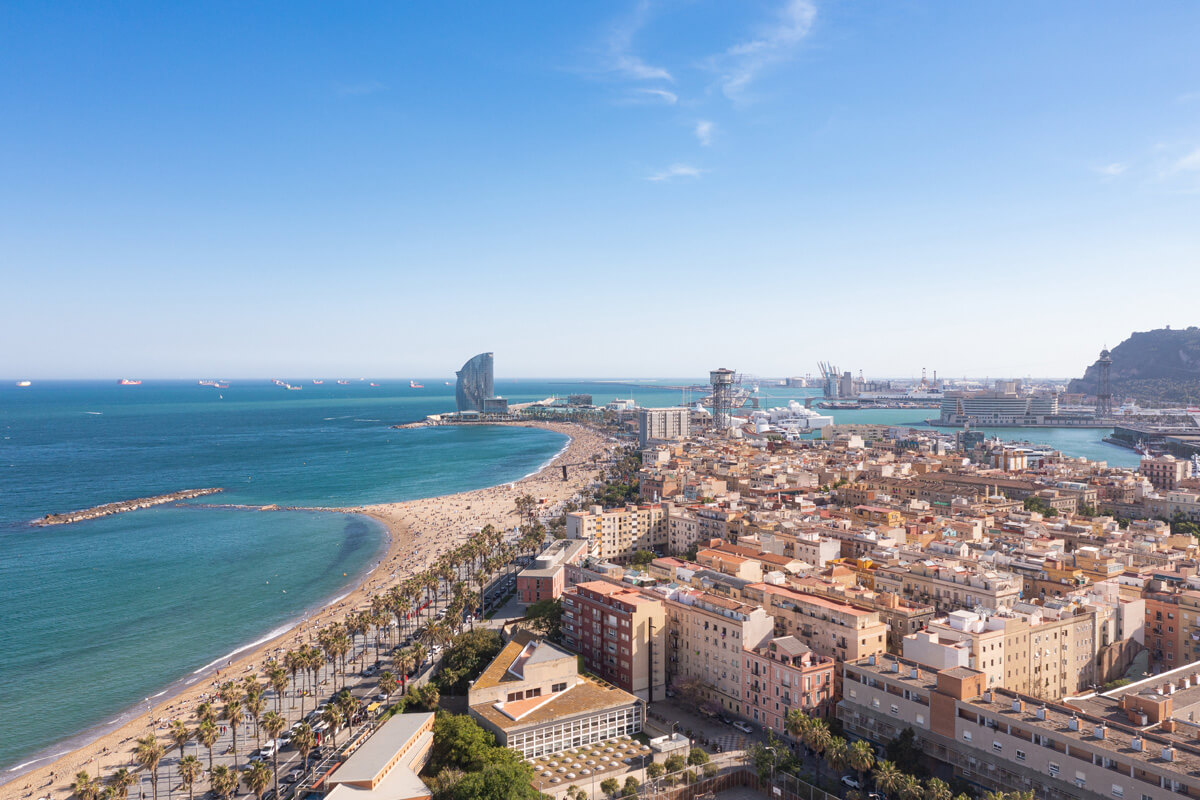
Aerial view of Barcelona and the Mediterranean Sea, © dronepicr/Flickr
Flying rather than sailing and thus flouting the laws of physics, they glide over the water at full speed. The hypersensitive racing boats, which can only be kept under control with extreme concentration, are equipped with state-of-the-art technology in accordance with the latest scientific advances and are of an impressive design, which uses only the wind as a driving force. More astronauts than sailors, the crew members protect themselves with helmets from accidental falls into the water.
With the America’s Cup, the ‘Formula 1 of the sea’, Barcelona will once again host a major sporting event in 2024. An event that is expected to generate an impact of 1 billion euros for the city, which will be followed by 940 million spectators around the world and which ranks as the biggest sporting competition after the Olympic Games and the Football World Cup.
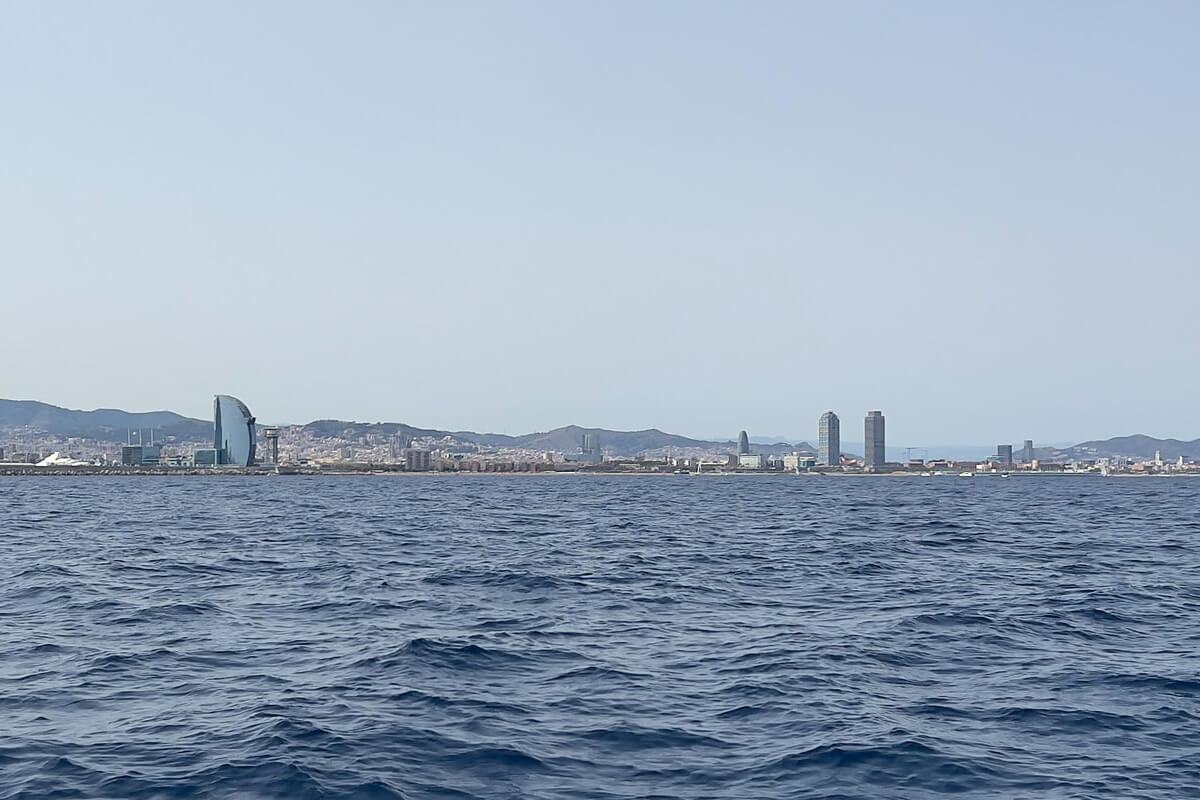
Barcelona’s coastline seen from the sea, © Jiyan Kawa/Unsplash
Barcelona and Its Slow Opening to the Sea
Barcelona and the sea, the raison d’être of the city par excellence. There it is, stretching out in front of the city. So big, messy and blue that it doesn’t fit anywhere, so they left it in front of our window – as Pablo Neruda said in one of his poems about the sea.
The city’s relationship with the Mediterranean has never been easy, as it tends to be with all couples. Founded in Roman times as a small village on the beach, Barcelona’s expansion began thanks to the advance of the sands on the coast. The natural harbour allowed the city to become a commercial metropolis on the Mediterranean. A port district emerged, epidemics were introduced, Barceloneta was consolidated as a fishing district, and the great industrial activity in Poblenou transformed Barcelona into the Catalan Manchester. A black and pestilent sewer now lies in front of the city, the chimneys smoke on the beach. No one thinks of a refreshing swim. Barcelona lives with its back to the sea, as the architect Antoni Bonet describes it.
It was not until the 1992 Olympic Games that the great urban transformation took place: the city discovered the sea, the seafront was activated, marinas were built, the Port Vell was revitalised and opened to the public, sewage treatment plants were installed, five kilometres of urban beaches were gained and an attractive promenade was designed as an urban space that would soon be used intensively.
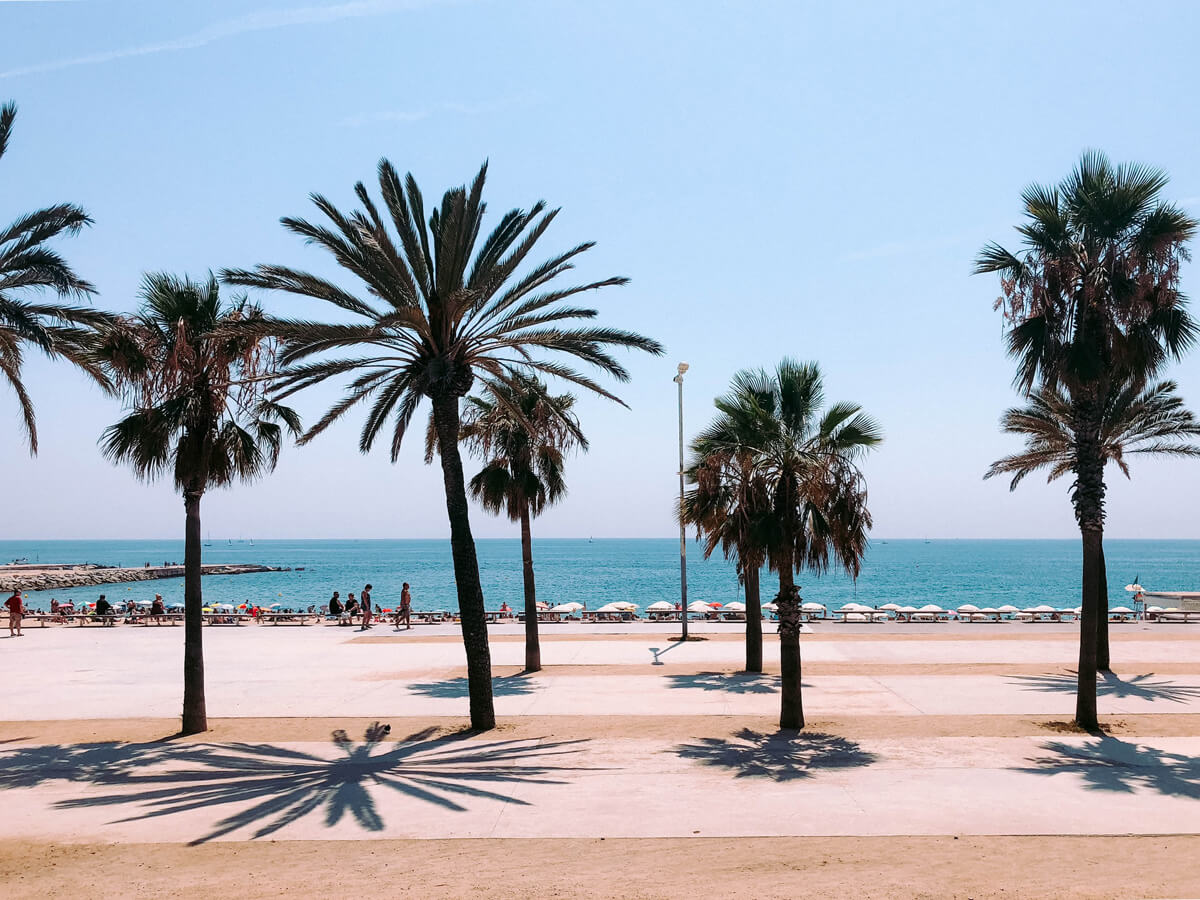
Barcelona’s seafront promenade, © Lucrezia Carnelos/Unsplash
The Waves of Tourists Are Followed by Total Calm: The Disenchantment at the Beginning of the 21st Century
Three lustrums later, the city is showing signs of exhaustion. Housing prices are soaring, tourist crowds are suffocating the city, and with the emergence of Airbnb, gentrification processes are accelerating even more. The Port Vell is invaded by the mega-yachts of the oligarchs and access to the sea is increasingly privatised and commercialised.
Although the FNOB (Fundació Navegació Oceànica Barcelona) continues to organise the Barcelona Word Race, the round-the-world double-handed yacht race, the sum of events such as the economic crisis of 2008, the Catalan independence movement and the pandemic of the last two years is finally causing the city to lose sight of what is undoubtedly its greatest attraction.
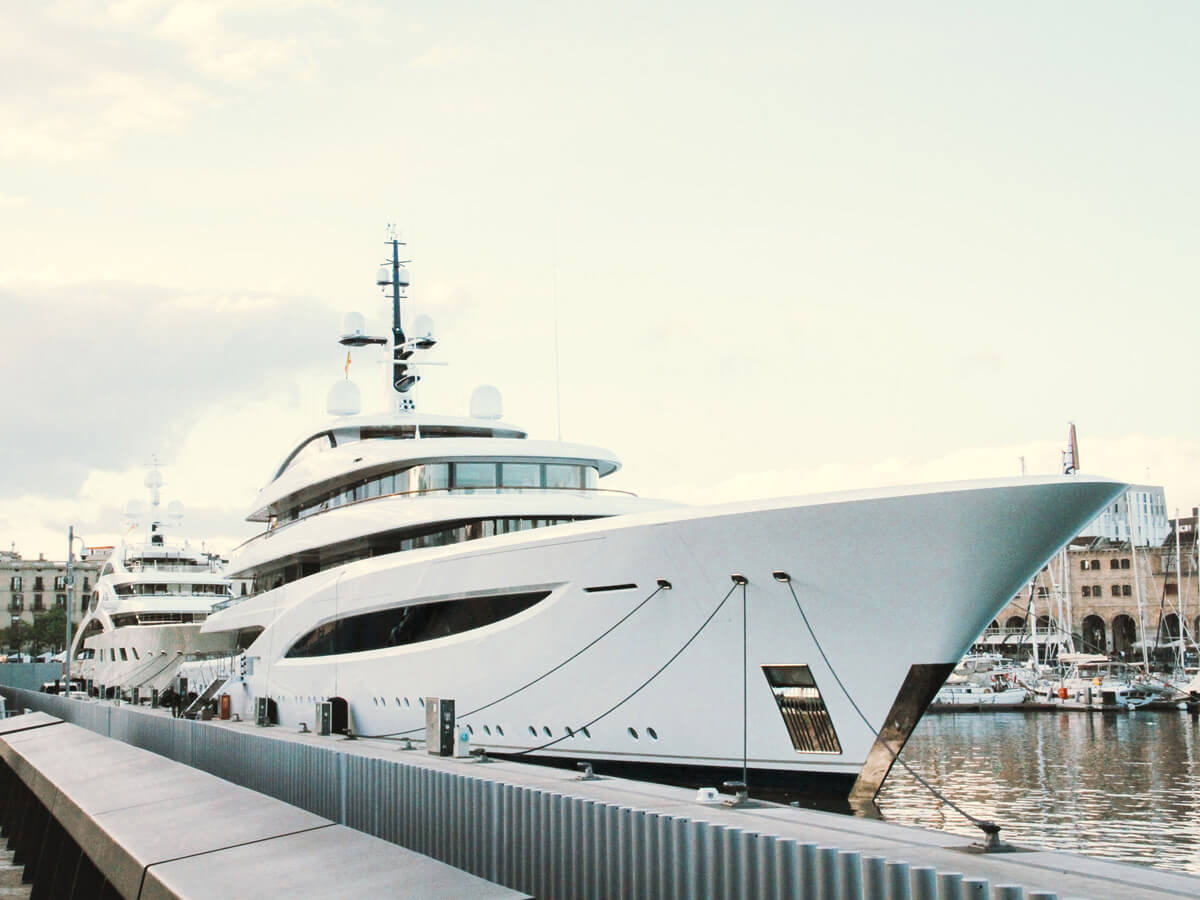
Superyachts moored in Barcelona’s Marina Port Vell, © Francisco Gomes/Unsplash
Favourable Winds Are Once Again Blowing: Barcelona Will Host the America’s Cup in 2024
„Barcelona really is one of the most recognised cities in the world so to have the ability to host the most recognised sailing event in the world is hugely exciting“, said Grant Dalton, CEO of Emirates Team New Zealand, the winning team of the last America’s Cup in Auckland and responsible for organising the next edition in 2024. „As Defender of the America’s Cup, we have always felt the responsibility to grow the event, the audience, and the sport of sailing on a global scale […] When thinking ahead to the 37th America’s Cup and the AC75’s racing within a few hundred metres of the Barcelona beach, waterfront, and race village fan engagement zones it will be nothing less than spectacular.”
So what, in our view, are the reasons why the organisers have chosen Barcelona over its competitors Malaga (southern Spain), Cork (Ireland) and Jeddah (Saudi Arabia)? Its character as a port city with direct access to the sea, almost unique in the world. Its excellent contemporary architecture and the high quality of its public spaces. Its culinary offer, as well as its age-old traditions. Its prevailing winds, which are ideal for this type of racing yachts. The close collaboration of the political authorities at municipal, regional and national level – for the first time in a long time – as well as the support of Barcelona’s business community.
A Sailing Festival for Everybody, All Along the Coastline
In the Port Vell, just in front of the old town, the pavilions of the five teams will be built – Emirates Team New Zealand, Ineos Britannia (GB), Alinghi Red Bull Racing (Switzerland), Luna Rossa Prada Pirelli Team (Italy) and NYYC American Magic (USA) are currently competing. The Moll de la Fusta will host the «Village», with side events for visitors. The competition boats will moor at the Moll de Europa, and in front of the city, in a strip between the W Hotel and the Olympic Port, the regatta course will be located, allowing thousands of visitors to see the competition up close, as well as on giant screens.
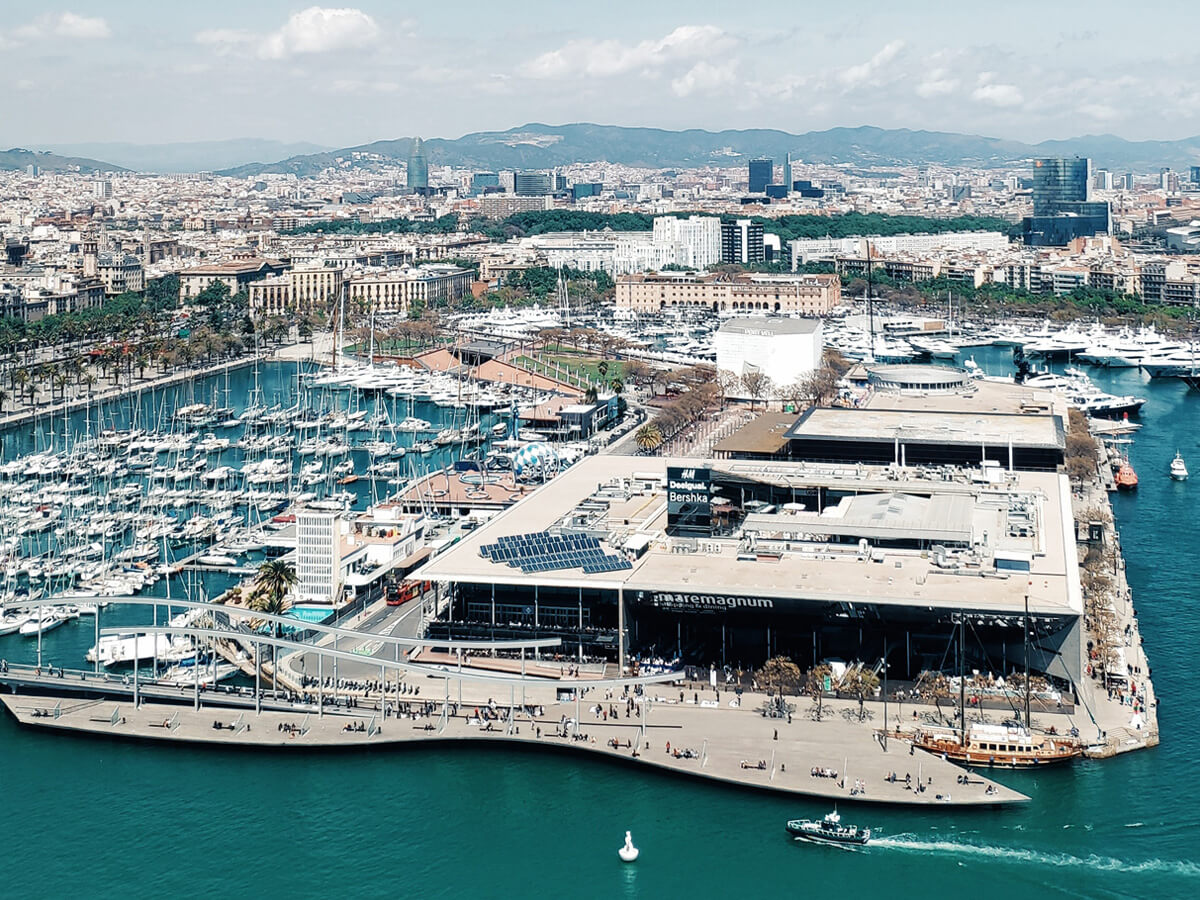
Barcelona’s Moll de la Fusta and Rambla de Mar, © Artemy Streltsov/Unsplash
Architecture and Urban Planning as Transforming Agents
Barcelona has reinvented itself time and again. The America’s Cup is a continuation of a series of major events that have taken place in the city, such as the Universal Exhibition of 1888, the International Exhibition of 1929, the 1992 Summer Olympics and the Universal Forum of Cultures in 2004. The event, which will be held during the autumn months of 2024, will therefore be a new opportunity to drive urban transformation. It will serve as a political and economic catalyst that will allow Barcelona to bring its urban planning and architecture up to date and adapt to future challenges. Both architecture and Barcelona’s model of urban transformation have returned to the international stage.
Setting off Towards New Horizons: Barcelona’s Renewed Relationship With the Sea
With its newly reinforced maritime identity, Barcelona will finally take possession of the vast expanse of water off its coasts as an urban space. It will consider it an integral part of its metropolitan region, and will begin, once and for all, to coexist fully with the sea.
Text: Hans Geilinger
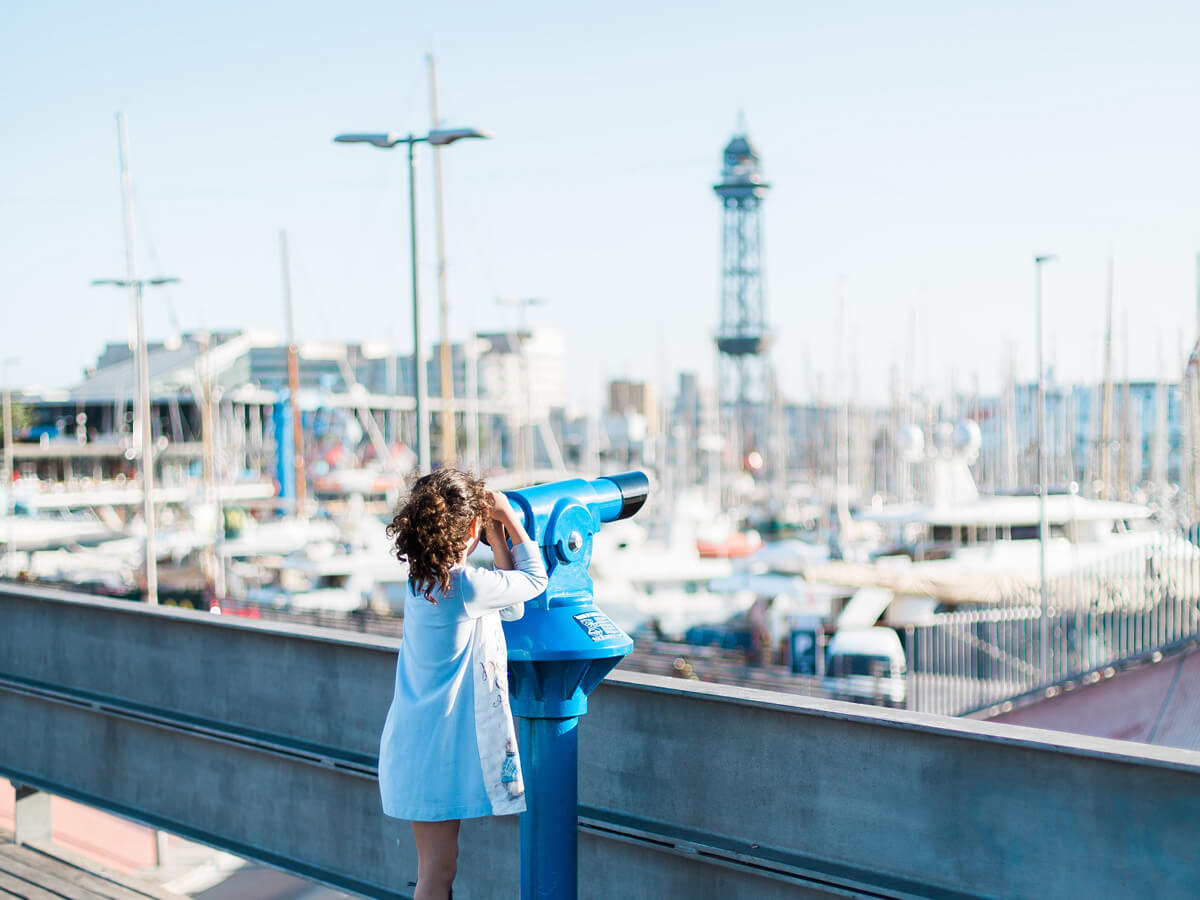
Setting off towards new horizons, © Bruno Martins/Unsplash
America’s Cup 2024: Barcelona’s Ageing Waterfront Gets a Facelift
Barcelona Gets Ready to Host the Most Important Sailing Regatta in the World and Is Speeding up the Upgrading of Its Shoreline

Aerial view of Barcelona and the Mediterranean Sea, © dronepicr/Flickr
Flying rather than sailing and thus flouting the laws of physics, they glide over the water at full speed. The hypersensitive racing boats, which can only be kept under control with extreme concentration, are equipped with state-of-the-art technology in accordance with the latest scientific advances and are of an impressive design, which uses only the wind as a driving force. More astronauts than sailors, the crew members protect themselves with helmets from accidental falls into the water.
With the America’s Cup, the ‘Formula 1 of the sea’, Barcelona will once again host a major sporting event in 2024. An event that is expected to generate an impact of 1 billion euros for the city, which will be followed by 940 million spectators around the world and which ranks as the biggest sporting competition after the Olympic Games and the Football World Cup.

Barcelona’s coastline seen from the sea, © Jiyan Kawa/Unsplash
Barcelona and Its Slow Opening to the Sea
Barcelona and the sea, the raison d’être of the city par excellence. There it is, stretching out in front of the city. So big, messy and blue that it doesn’t fit anywhere, so they left it in front of our window – as Pablo Neruda said in one of his poems about the sea.
The city’s relationship with the Mediterranean has never been easy, as it tends to be with all couples. Founded in Roman times as a small village on the beach, Barcelona’s expansion began thanks to the advance of the sands on the coast. The natural harbour allowed the city to become a commercial metropolis on the Mediterranean. A port district emerged, epidemics were introduced, Barceloneta was consolidated as a fishing district, and the great industrial activity in Poblenou transformed Barcelona into the Catalan Manchester. A black and pestilent sewer now lies in front of the city, the chimneys smoke on the beach. No one thinks of a refreshing swim. Barcelona lives with its back to the sea, as the architect Antoni Bonet describes it.
It was not until the 1992 Olympic Games that the great urban transformation took place: the city discovered the sea, the seafront was activated, marinas were built, the Port Vell was revitalised and opened to the public, sewage treatment plants were installed, five kilometres of urban beaches were gained and an attractive promenade was designed as an urban space that would soon be used intensively.

Barcelona’s seafront promenade, © Lucrezia Carnelos/Unsplash
The Waves of Tourists Are Followed by Total Calm: The Disenchantment at the Beginning of the 21st Century
Three lustrums later, the city is showing signs of exhaustion. Housing prices are soaring, tourist crowds are suffocating the city, and with the emergence of Airbnb, gentrification processes are accelerating even more. The Port Vell is invaded by the mega-yachts of the oligarchs and access to the sea is increasingly privatised and commercialised.
Although the FNOB (Fundació Navegació Oceànica Barcelona) continues to organise the Barcelona Word Race, the round-the-world double-handed yacht race, the sum of events such as the economic crisis of 2008, the Catalan independence movement and the pandemic of the last two years is finally causing the city to lose sight of what is undoubtedly its greatest attraction.

Superyachts moored in Barcelona’s Marina Port Vell, © Francisco Gomes/Unsplash
Favourable Winds Are Once Again Blowing: Barcelona Will Host the America’s Cup in 2024
„Barcelona really is one of the most recognised cities in the world so to have the ability to host the most recognised sailing event in the world is hugely exciting“, said Grant Dalton, CEO of Emirates Team New Zealand, the winning team of the last America’s Cup in Auckland and responsible for organising the next edition in 2024. „As Defender of the America’s Cup, we have always felt the responsibility to grow the event, the audience, and the sport of sailing on a global scale […] When thinking ahead to the 37th America’s Cup and the AC75’s racing within a few hundred metres of the Barcelona beach, waterfront, and race village fan engagement zones it will be nothing less than spectacular.”
So what, in our view, are the reasons why the organisers have chosen Barcelona over its competitors Malaga (southern Spain), Cork (Ireland) and Jeddah (Saudi Arabia)? Its character as a port city with direct access to the sea, almost unique in the world. Its excellent contemporary architecture and the high quality of its public spaces. Its culinary offer, as well as its age-old traditions. Its prevailing winds, which are ideal for this type of racing yachts. The close collaboration of the political authorities at municipal, regional and national level – for the first time in a long time – as well as the support of Barcelona’s business community.
A Sailing Festival for Everybody, All Along the Coastline
In the Port Vell, just in front of the old town, the pavilions of the five teams will be built – Emirates Team New Zealand, Ineos Britannia (GB), Alinghi Red Bull Racing (Switzerland), Luna Rossa Prada Pirelli Team (Italy) and NYYC American Magic (USA) are currently competing. The Moll de la Fusta will host the «Village», with side events for visitors. The competition boats will moor at the Moll de Europa, and in front of the city, in a strip between the W Hotel and the Olympic Port, the regatta course will be located, allowing thousands of visitors to see the competition up close, as well as on giant screens.

Barcelona’s Moll de la Fusta and Rambla de Mar, © Artemy Streltsov/Unsplash
Architecture and Urban Planning as Transforming Agents
Barcelona has reinvented itself time and again. The America’s Cup is a continuation of a series of major events that have taken place in the city, such as the Universal Exhibition of 1888, the International Exhibition of 1929, the 1992 Summer Olympics and the Universal Forum of Cultures in 2004. The event, which will be held during the autumn months of 2024, will therefore be a new opportunity to drive urban transformation. It will serve as a political and economic catalyst that will allow Barcelona to bring its urban planning and architecture up to date and adapt to future challenges. Both architecture and Barcelona’s model of urban transformation have returned to the international stage.
Setting off Towards New Horizons: Barcelona’s Renewed Relationship With the Sea
With its newly reinforced maritime identity, Barcelona will finally take possession of the vast expanse of water off its coasts as an urban space. It will consider it an integral part of its metropolitan region, and will begin, once and for all, to coexist fully with the sea.
Text: Hans Geilinger

Setting off towards new horizons, © Bruno Martins/Unsplash





